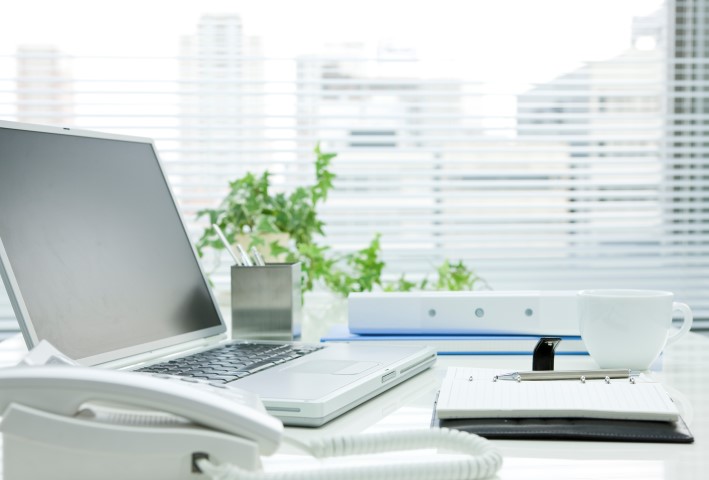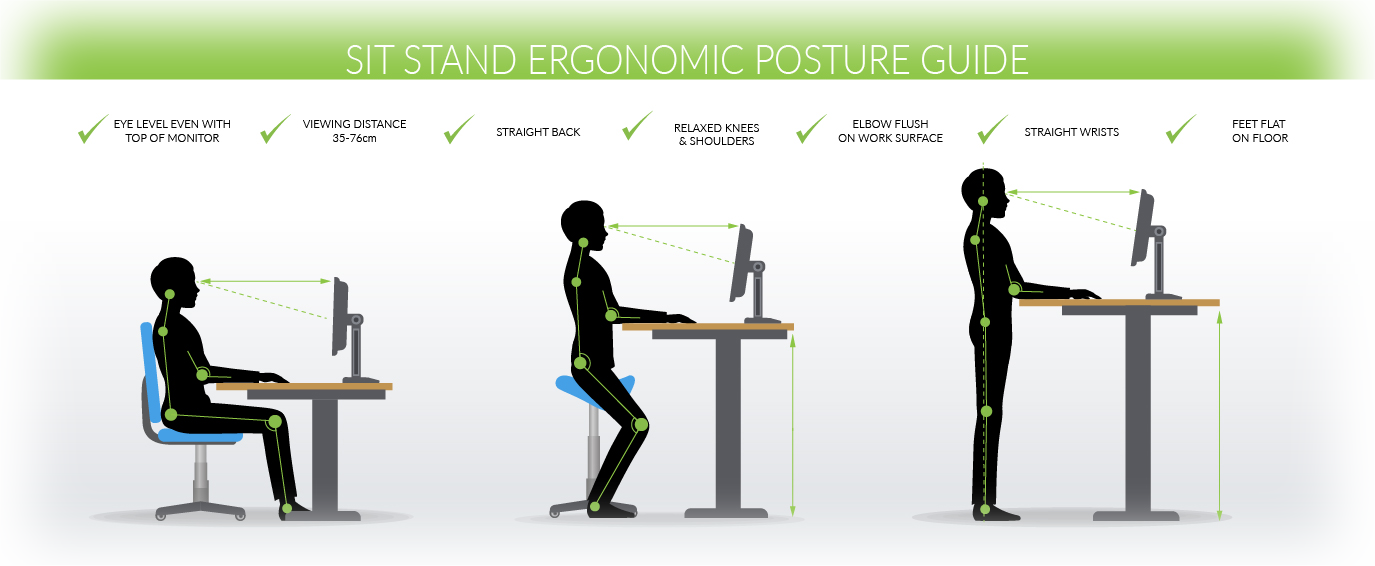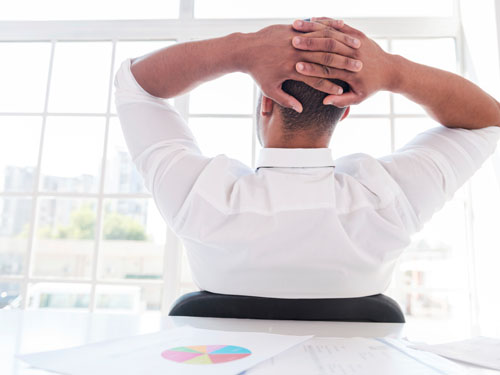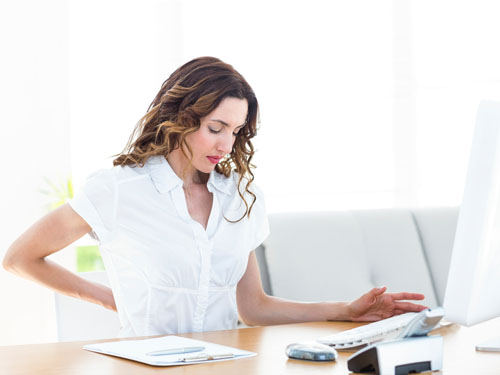
EVERYBODY NEEDS A SIT STAND WORKSTATION.
Below are some great tips to help you adjust to your new style

(be sure to click on the tips to help get the most of the extended descriptions inside)
TIP #2: ALTERNATE BETWEEN SITTING AND STANDING
Utilising your height adjustable desk isn’t about choosing one or the other, the best method lies in alternating between sitting and standing. A lot of people who invest in a height adjustable desk end up not using them properly. Not only does this end up with the person not utilising the standing function properly, it ends up with a negative impact on the persons body.
By following a regular routine of alternating your position, your body will learn to adjust to the various position in the same way we got used to sitting down for work in the past. Only by committing to regular routine will we break the habits of old.
TIP #3: TAKE SHORT BREAKS
Make sure to take lots of short breaks and stretch your muscles. Those short breaks don’t need to be a walk away from your desk, sometimes a quick look away from your screen for 1-2 minutes whilst you sort through papers, get a drink or just simply make a phone call is enough to keep yourself active and changing position. You may even find breaking up the day with short little breaks helps increase your productivity as you increase your activity level.
By using these techniques you can make sure you try to keep moderately physically active during the day. Don’t forget, the best posture is always the next one.





